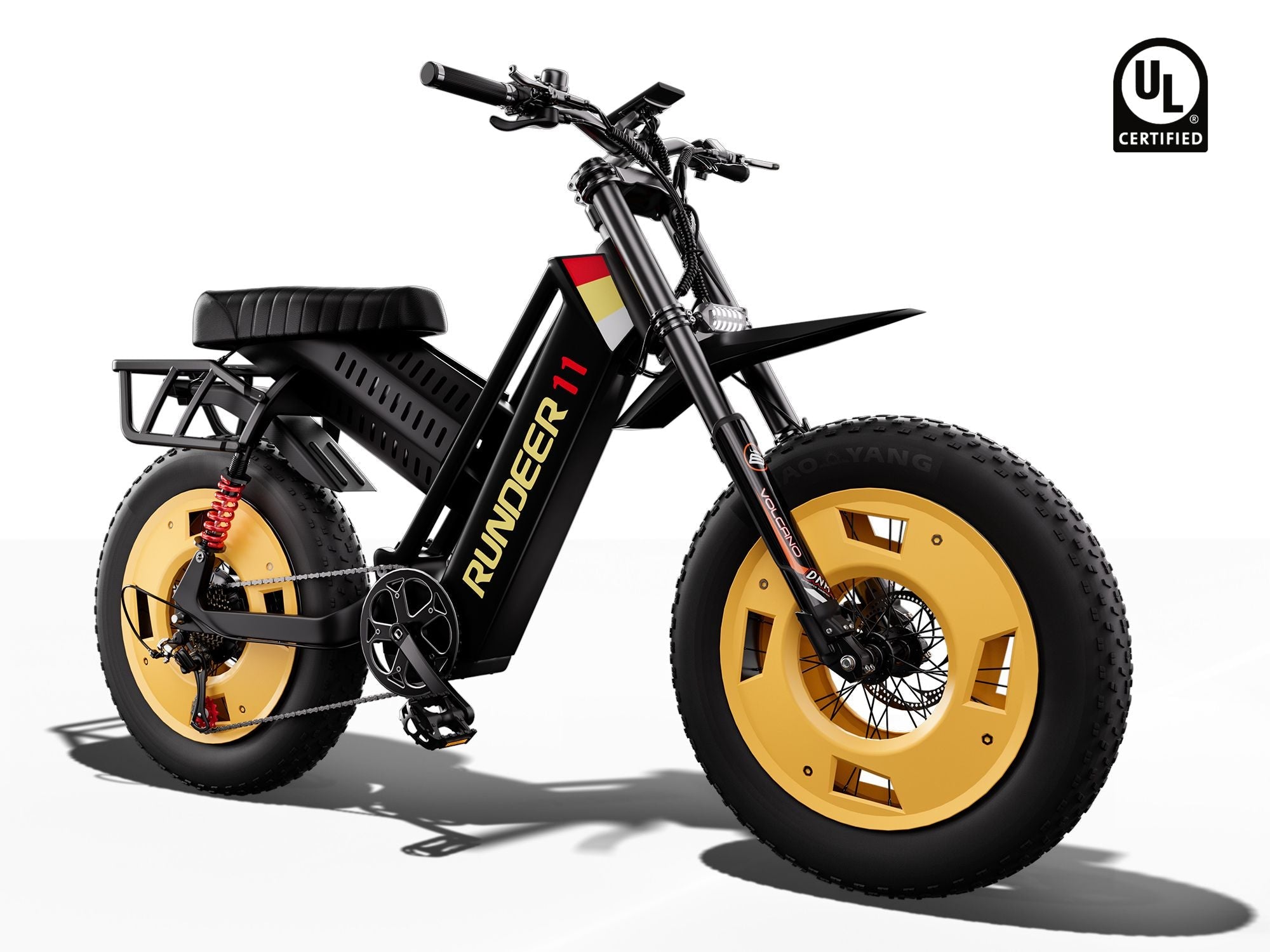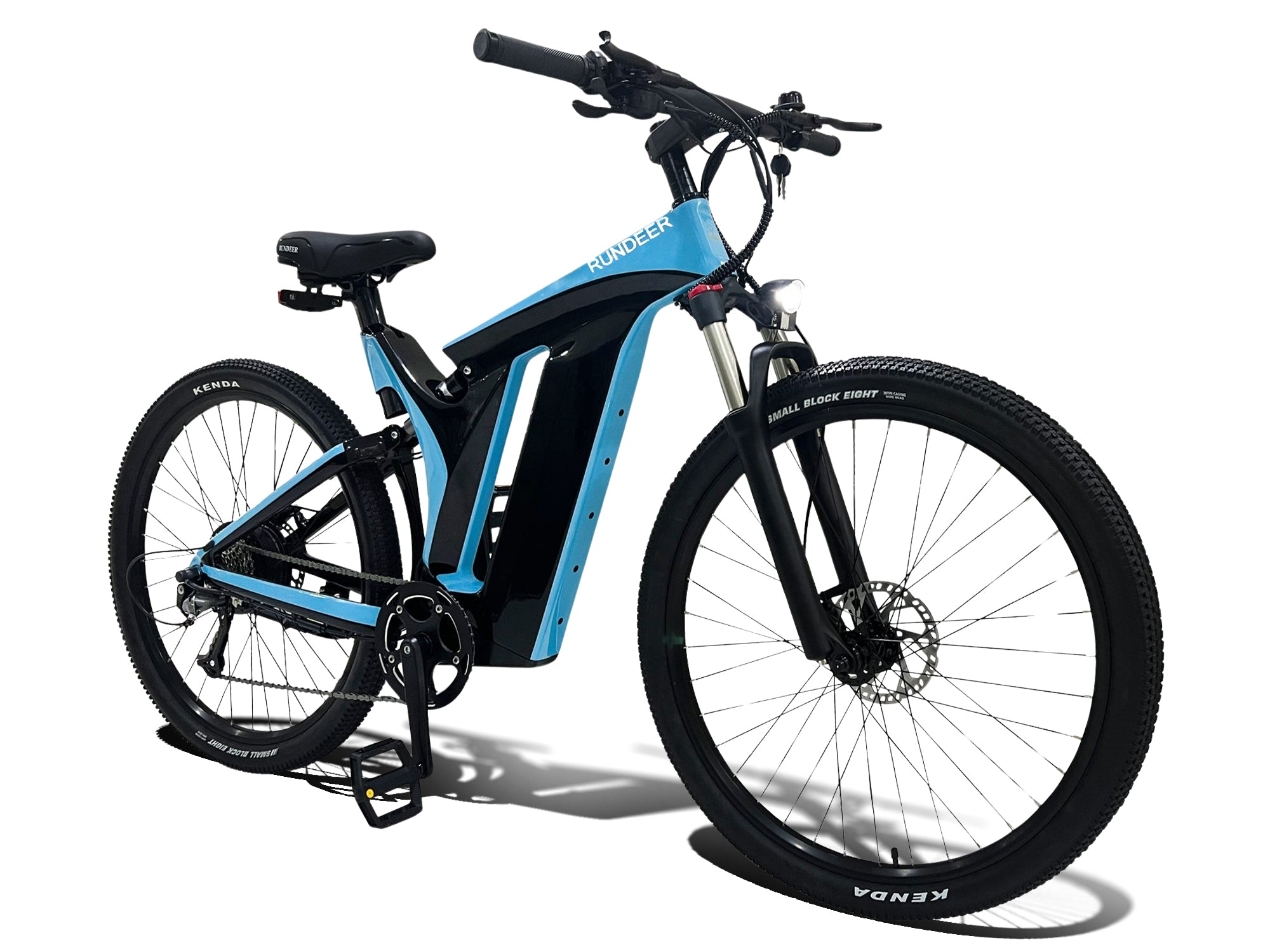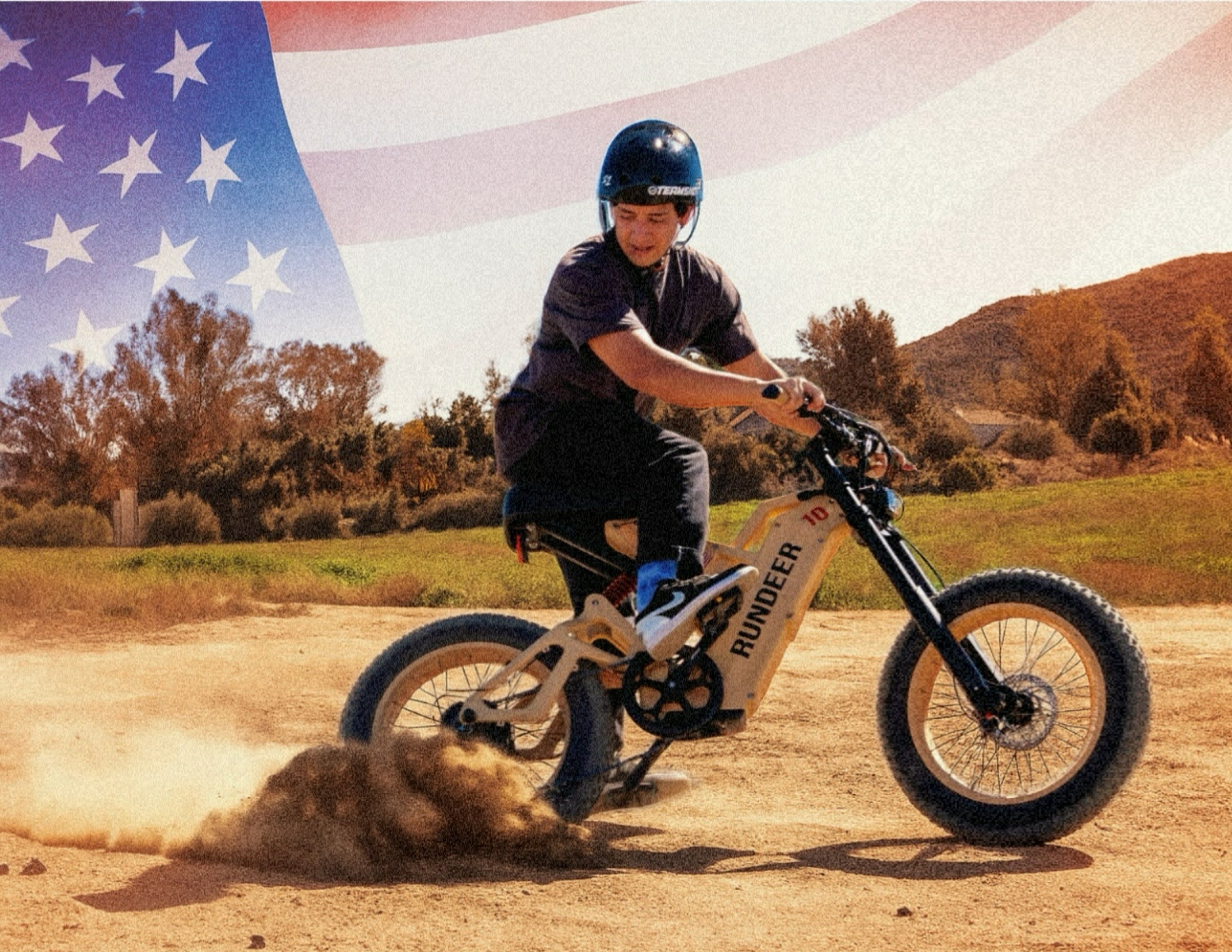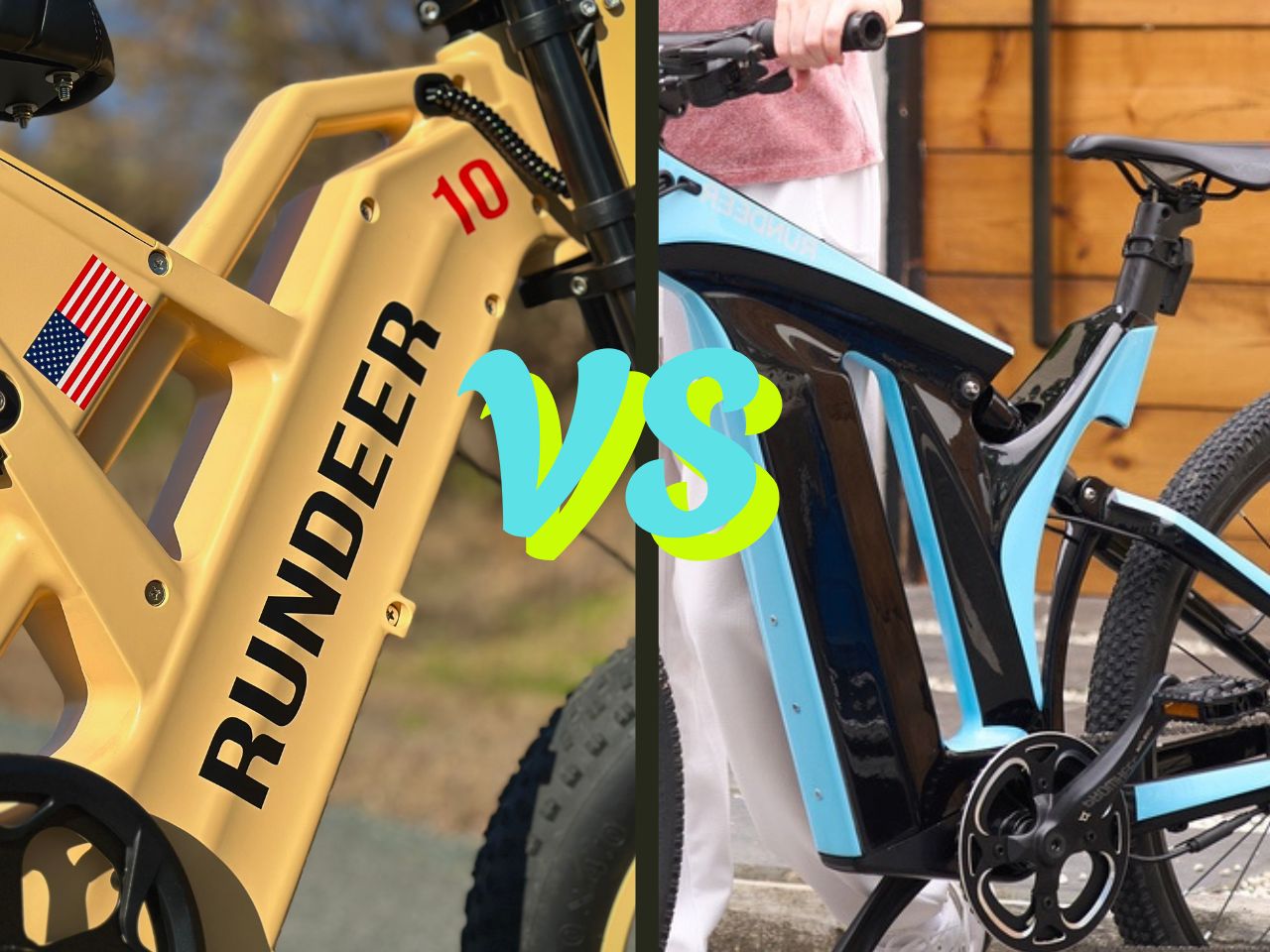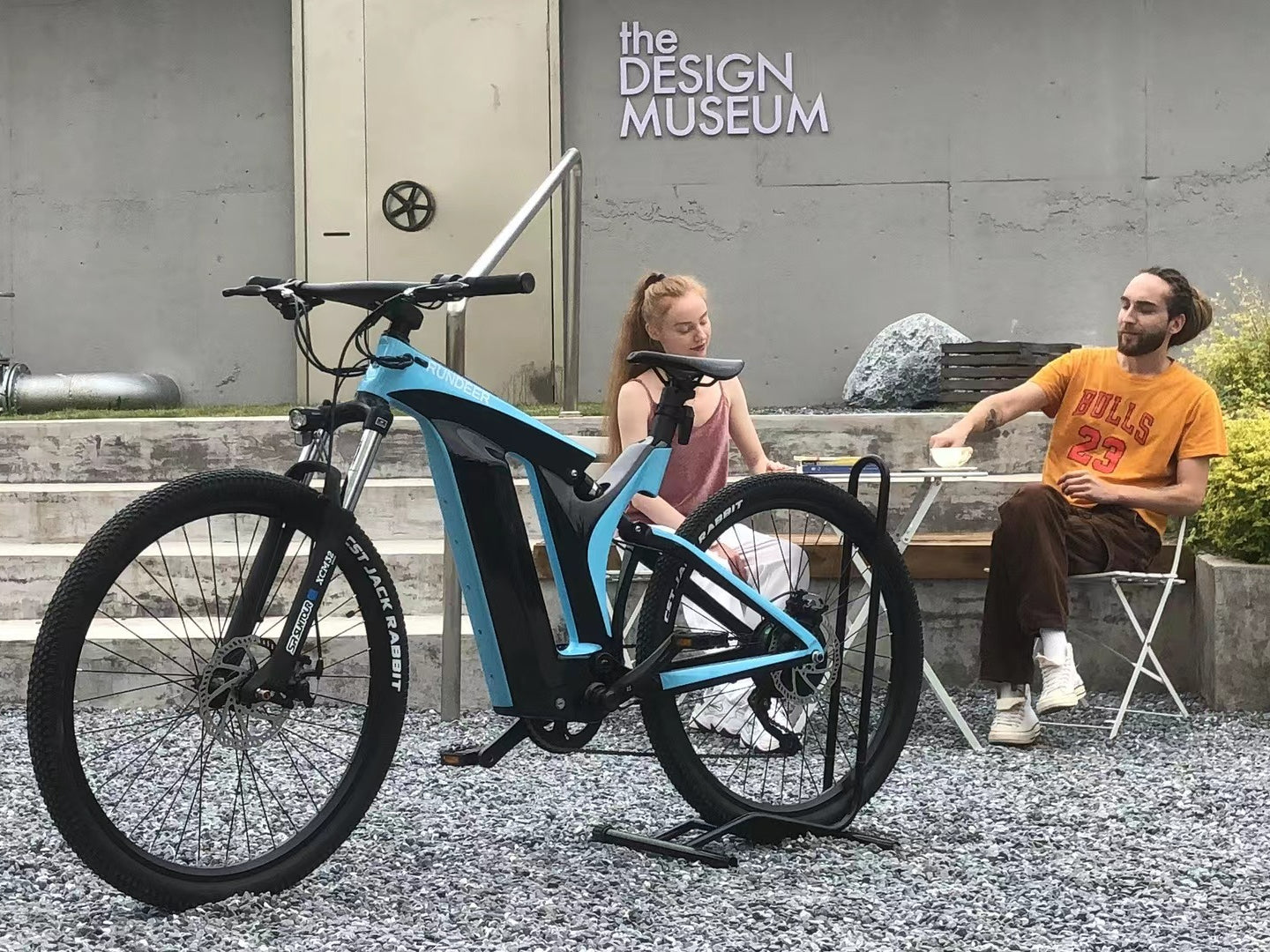Taking your electric bike off-road is a blast! You get to enjoy the outdoors, push yourself, and get a little help from the motor when things get tough. But having the right stuff can make a huge difference between a good ride and an awesome one. Whether you're climbing steep hills or exploring wooded trails, these eight must-have accessories will keep you safe, comfy, and prepared for anything Mother Nature throws at you.
1. Helmet - The Non-Negotiable Protector
Why You Need a Good One
A head injury can ruin your day faster than anything. When you're riding off-road on an e-bike, things can get a little wild, and you might be going faster than you think. That's why a good helmet isn't just important – it's a must-have.
What to Look For
Don't just grab any old helmet. If you're serious about trail riding, look for helmets designed for that kind of riding. Trail or enduro helmets give you more protection on the sides and back of your head – spots that are more likely to get hit if you fall off-road.
A lot of the newer helmets have MIPS (Multi-directional Impact Protection System) or something similar. This gives you extra protection in case you hit your head at an angle.
Getting the Right Fit
The way your helmet fits is just as important as what it's made of. A good helmet should:
- Sit flat on your head, not tipped back.
- Stay put when you shake your head.
- Have about two fingers' space between your eyebrows and the edge of the helmet.
- Have straps that make a "Y" shape around your ears.

2. Lighting System - Illuminate Your Path
Why You Need Them
Even if you're not planning on riding at night, things can change quickly on the trail. You might end up riding through thick woods, or the weather might turn bad. That's why you need good lights. You'll need a light for the front and one for the back.
Front Lights
For trail riding, get a front light that puts out at least 800-1000 lumens. The best ones let you change the brightness so you can save battery on easy parts of the trail, and crank it up when you need more light. Look for lights that spread the light out wide instead of focusing it in a narrow beam. Those work better off-road.
Rear Lights
Don't forget a rear light! It helps other people see you if you're on a trail with other users or crossing roads. Flashing lights are great for making sure people see you, especially if it's foggy or dusty.
Bonus Tip
Some riders like to put an extra light on their helmet. That way, you can look around corners or check your bike without having to turn the whole bike. Having both a light on your bike and one on your helmet gives you the best visibility on the trail.

3. Navigation Tools - Don't Get Lost
Trails can get confusing, and running out of battery while you're lost is no fun. Luckily, there are a lot of easy ways to find your way these days.
Phone Mount
A phone holder that attaches to your handlebars can turn your phone into a GPS. When you're shopping for one, make sure it:
- Holds your phone tight, even when the trail gets rough.
- Lets you use the touchscreen while you're riding.
- Protects your phone from rain and dust.
Offline Maps
If you're heading out into the boonies, download maps to your phone before you go. You might not have cell service out there, so having maps already on your phone is a lifesaver. There are also a bunch of good apps made just for mountain biking and off-road riding. They have trail info, elevation maps, and navigation tools.
GPS Device
For really long rides, or if you're going way out into the middle of nowhere, think about getting a dedicated GPS device.
They have better battery life and are tougher than phones. They're made for being outdoors and will help you find your way when you're far from everything.
4. Hydration Solutions - Don't Get Thirsty
It's easy to get dehydrated, especially when you're working hard on tough trails. Electric bikes can trick you because you can ride further than you normally would, and that means you're out there longer.
Hydration Packs
Backpack-style hydration packs are the best for off-road riding. They have a water bag inside with a tube that you can drink from without using your hands. This means you can take sips while you're riding tricky sections. A lot of packs also have room for tools, snacks, and extra clothes.
Water Bottles
For shorter rides or when it's really hot, water bottles that attach to your bike frame are easy to grab for a quick drink. Some people even use both – a water bottle for energy drinks and a hydration pack for water.
Important Tip
Here's a simple rule: if you feel thirsty, you're already behind. Take small sips of water often, instead of gulping down a bunch all at once.

5. Multi-Tool - Your Portable Bike Shop
Even the best e-bikes sometimes need a little fixing up on the trail. A good multi-tool can be the difference between a quick repair and a long walk home.
What to Look For
The most helpful multi-tools for e-bikes have:
- Different sizes of Allen wrenches (usually 2-8mm)
- Torx bits (especially T25, which is common on e-bikes)
- A chain tool
- Screwdrivers (flathead and Phillips)
- Spoke wrenches
Get a compact tool with full-size versions of the tools instead of tiny ones that are hard to use. Some newer multi-tools also have things like tire plug tools or chain breakers that work with different types of chains.
Where to Keep It
Keep your multi-tool somewhere you can easily get to it – like a seat bag, frame bag, or tool roll. There's nothing worse than having the right tool but not being able to reach it when you need it.
6. Flat Repair Kit - Stay on the Trail
Flats happen to everyone. E-bikes are heavier, which means you're more likely to get a pinch flat if you hit a rock or root. A good flat repair kit makes sure you don't have to push your heavy e-bike all the way back.
What to Pack
A basic kit should have:
- A spare inner tube (the right size for your wheels)
- Tire levers (at least two)
- A small pump or CO2 inflator
- Tubeless tire plugs if you have tubeless tires
If you're running tubeless tires, take both plugs and a spare tube just in case.
Practice Makes Perfect
Learn how to fix a flat before you need to do it on the trail. Practice changing a tube at home first – you don't want to be doing it for the first time in the dark in the woods.
7. Ergonomic Upgrades - Comfort for Miles
Focus on Contact Points
The three spots where your body touches your bike – hands, feet, and butt – are super important, especially for off-road riding. Small changes can make a big difference in how comfortable you are on longer rides.
Comfy Seat
Finding the right seat is a personal thing, but saddles made for off-road usually have:
- A slightly wider shape to support different riding positions
- A groove or hole to relieve pressure
- Tough, water-resistant material
Grips Matter
Your grips are another important contact point. Ergonomic grips that flare out a little at the ends can help prevent your hands from going numb and give you more control when you're going downhill on rough trails. Some grips use different materials to absorb vibrations while still giving you a good grip.
Don't Forget Your Feet
Good flat pedals with adjustable pins will keep your feet from slipping, even when you're bouncing over rocks. If you use clipless pedals, multi-release cleats make it easier to get your feet out when you need to on tricky trails.
8. Security Lock - Keep Your E-Bike Safe
E-bikes cost a lot, and that makes them a target for thieves. Never leave your bike alone without locking it up.
Folding Locks: A Good Middle Ground
Folding locks are a good choice for trail riding because they're secure and easy to carry. They'll protect your bike if you're making a quick stop at a coffee shop or scenic overlook, and they won't weigh you down too much.
U-Locks and Chains: Maximum Security
For parking at trailheads in cities, think about using a heavier U-lock or chain lock. They're heavier to carry, but they're much harder to cut or break. Some people leave their heavy lock at the trailhead and only use it when they park.
Lock It Right
No matter what kind of lock you use, always lock your bike to something that can't be moved. Position the lock so it's hard to get to with tools. Some riders also hide GPS trackers on their bikes for extra security.
Get Equipped and Go Ride!
Having the right gear can turn a good ride into an awesome adventure. By getting these eight essential items, you'll be safer, more comfortable, and more confident, no matter what the trails throw at you. Start building your collection now, focusing on safety gear first. Then, add comfort and convenience items as you can afford them. You'll be glad you did when you're tackling new trails with everything you need right there.

